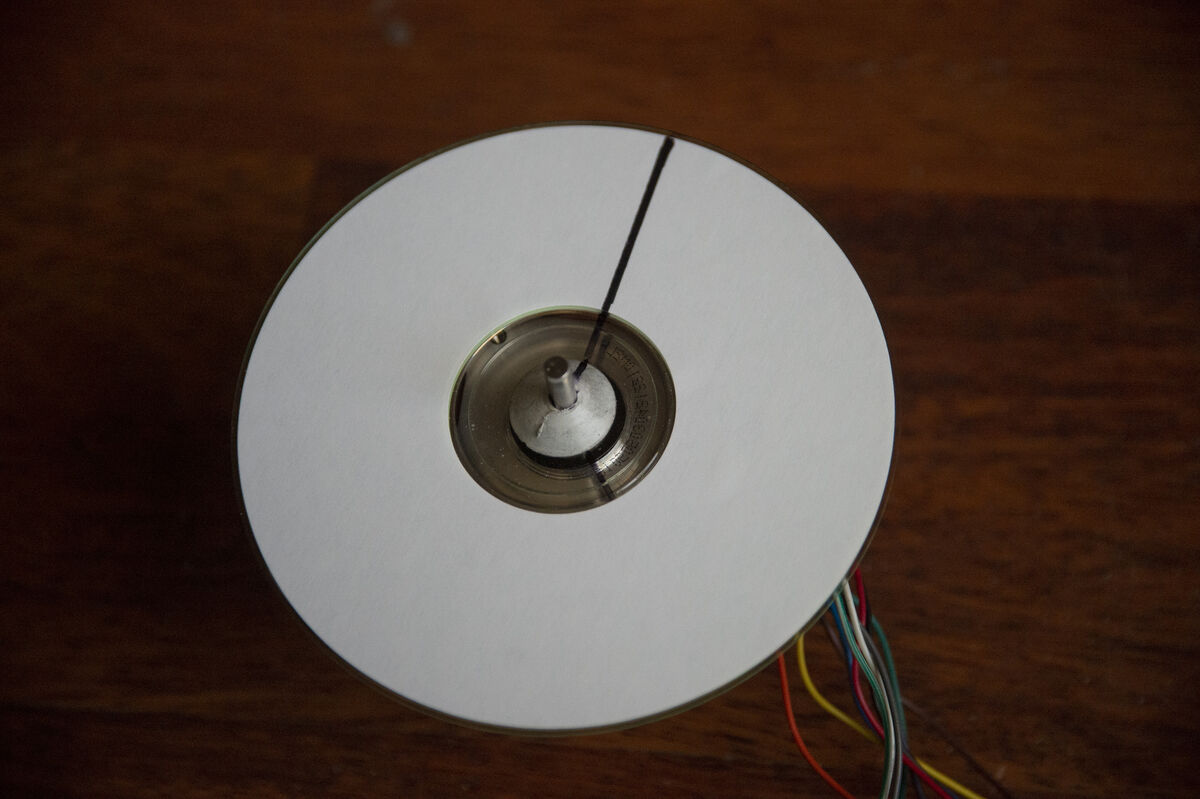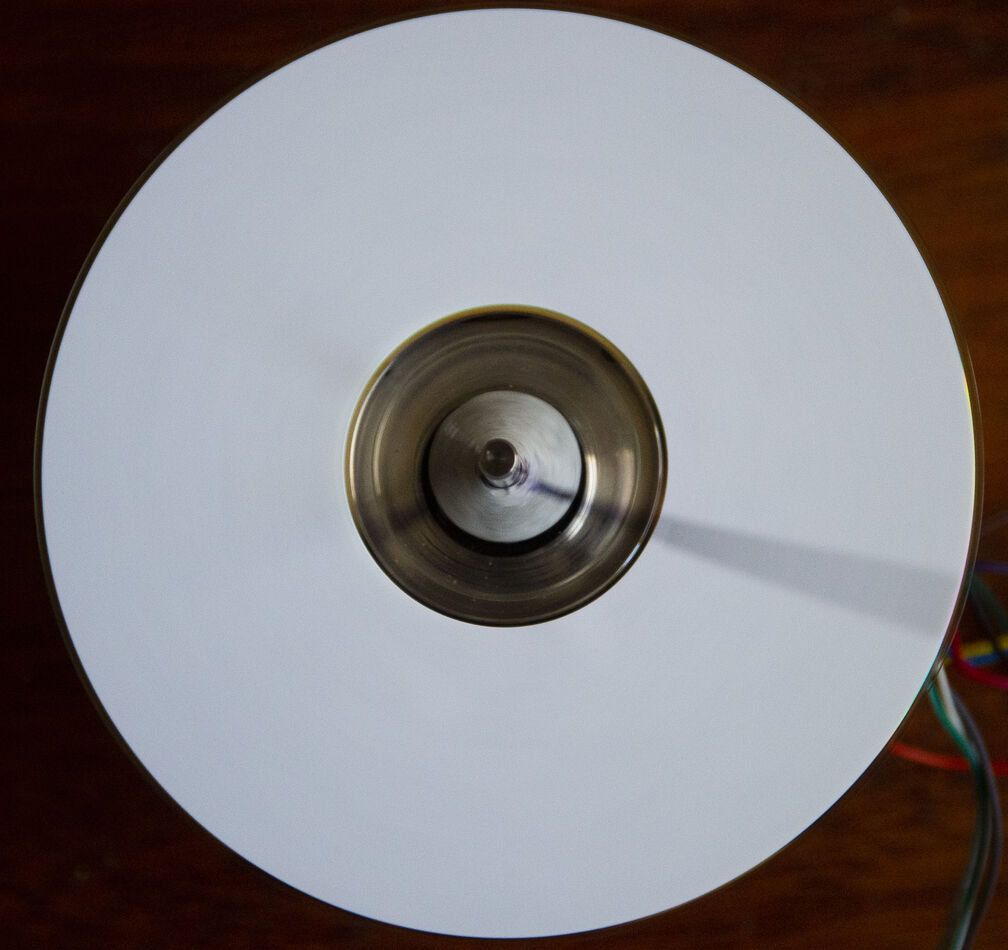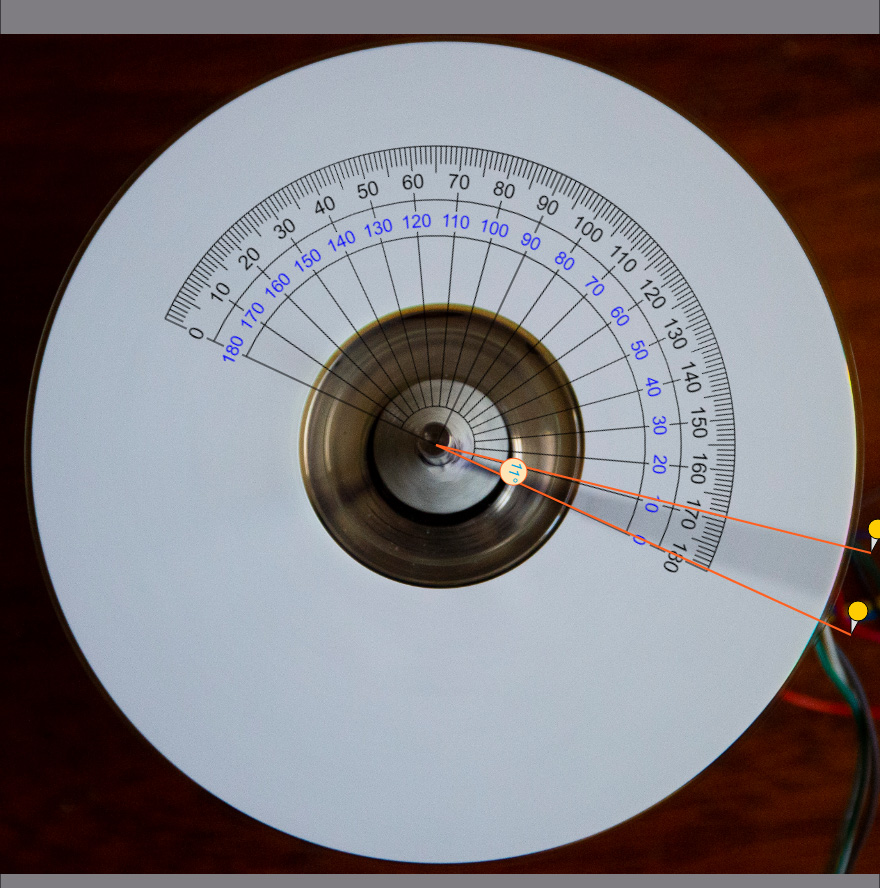How do I attach a disk to a motor
Feb 17, 2024 15:29:36 #
Feb 17, 2024 23:43:31 #
2-part epoxy, i agree. Use a quick set (5min) epoxy and spin the motor/assembly slowly so that the epoxy doesn't drip, but distributes evenly around the shaft and disk.
Another (inelegant way) would be to just tape it to the shaft with duct tape, gorilla tape, etc. seems it would be more than adequate for your application and the cheapest method of all. But, if you're like me, I would over-engineer it with a very elegant solution. :-) or :-(
Another (inelegant way) would be to just tape it to the shaft with duct tape, gorilla tape, etc. seems it would be more than adequate for your application and the cheapest method of all. But, if you're like me, I would over-engineer it with a very elegant solution. :-) or :-(
Feb 18, 2024 04:30:05 #
BebuLamar wrote:
The shaft of the motor is 5mm and it's straight no taper Has a flat to accomodate a set screw.
It's a stepping motor so I use a programmable controller with a high speed output module to generate stepping pulses and direction signal. I think I run it up to about 1750rpm.
I will post a picture later.
It's a stepping motor so I use a programmable controller with a high speed output module to generate stepping pulses and direction signal. I think I run it up to about 1750rpm.
I will post a picture later.
Consider wiring an LED in series with the stepper motor controller. Mount the LED on the disk. At 1800 rpm you’ll get 30 revolutions a second, roughly 3-1/3 milliseconds long. Depending on how many pulses per second the controller sends out (lets say 400) That should give you a measurable arc of 360 degrees at 1/30 sec, 180 degrees at 1/60, 90 degrees at 1/125, 45 at 1/250, and 22.5 at 1/500 th second. The LED will blink on and off multiple times during the exposure, so you can count the blinks as well as measure the streaks, rather than try to guess where a blurry line starts and stops.
Feb 18, 2024 06:41:48 #
MrPhotog wrote:
Consider wiring an LED in series with the stepper ... (show quote)
Good idea but I would have to use a slip ring to power the LED.
Feb 18, 2024 09:44:55 #
BebuLamar wrote:
Good idea but I would have to use a slip ring to power the LED.
Can I insert a question here about the other project you had going with the chip you were trying to wire in?
Did that work out ok after you were able to find the little circuit board assembly?
Feb 18, 2024 09:54:20 #
dustie wrote:
Can I insert a question here about the other project you had going with the chip you were trying to wire in?
Did that work out ok after you were able to find the little circuit board assembly?
Did that work out ok after you were able to find the little circuit board assembly?
Well that's on going. I hooked up the board and use an old dome from a Minolta meter. Do a recording of the output voltage vs illumination as comparred to a Minolta Flashmeter VI. Did a linear regression in Excel to get the equation of voltage to LV (light value). I found I can get the reading to agree with the meter +/- 1/10 of a stop. That is encouraging. But right now it involved a 5V power supply, a DMM and the computer to convert voltage to LV.
I would need a small meter, a battery power source and an OP amp to implement the scaling instead of using Excel to calculate. The meter would readout only in LV and with that value I would use a dial from an old meter to figure out aperture/shutter speed/ISO etc.. The dial is similar to the picture of my avatar. I prefer an old style galvanometer instead of a digital readout as it looks cooler but galvanometer would require 2 ranges and thus it would be more difficult to implement with the OP amp.
Feb 18, 2024 10:00:29 #
Feb 18, 2024 17:33:31 #
I ordered the hub and a motor mount but I found a rubber plug intended to plug the hole of an electrical cabinet. I used it to plug the hole of a CD and then drilled a hole in the plug and pushed the CD on to the motor shaft.
It kinda work OK. I spinned it at 1800RPM and took a shot with shutter speed of 1/1000. The angle should be 10.5 degrees. It's not clearly defined plus there is a bit of the curve dued to rolling shutter effect. I use a software called protractor to measure it. Not very accurate but give an idea.
Link to the online software.
https://www.ginifab.com/feeds/angle_measurement/
This is how the motor and the CD looks like
second image is the spining disk taken at 1/1000 sec.
Third image is the online protractor tool.
It kinda work OK. I spinned it at 1800RPM and took a shot with shutter speed of 1/1000. The angle should be 10.5 degrees. It's not clearly defined plus there is a bit of the curve dued to rolling shutter effect. I use a software called protractor to measure it. Not very accurate but give an idea.
Link to the online software.
https://www.ginifab.com/feeds/angle_measurement/
This is how the motor and the CD looks like
second image is the spining disk taken at 1/1000 sec.
Third image is the online protractor tool.



If you want to reply, then register here. Registration is free and your account is created instantly, so you can post right away.


